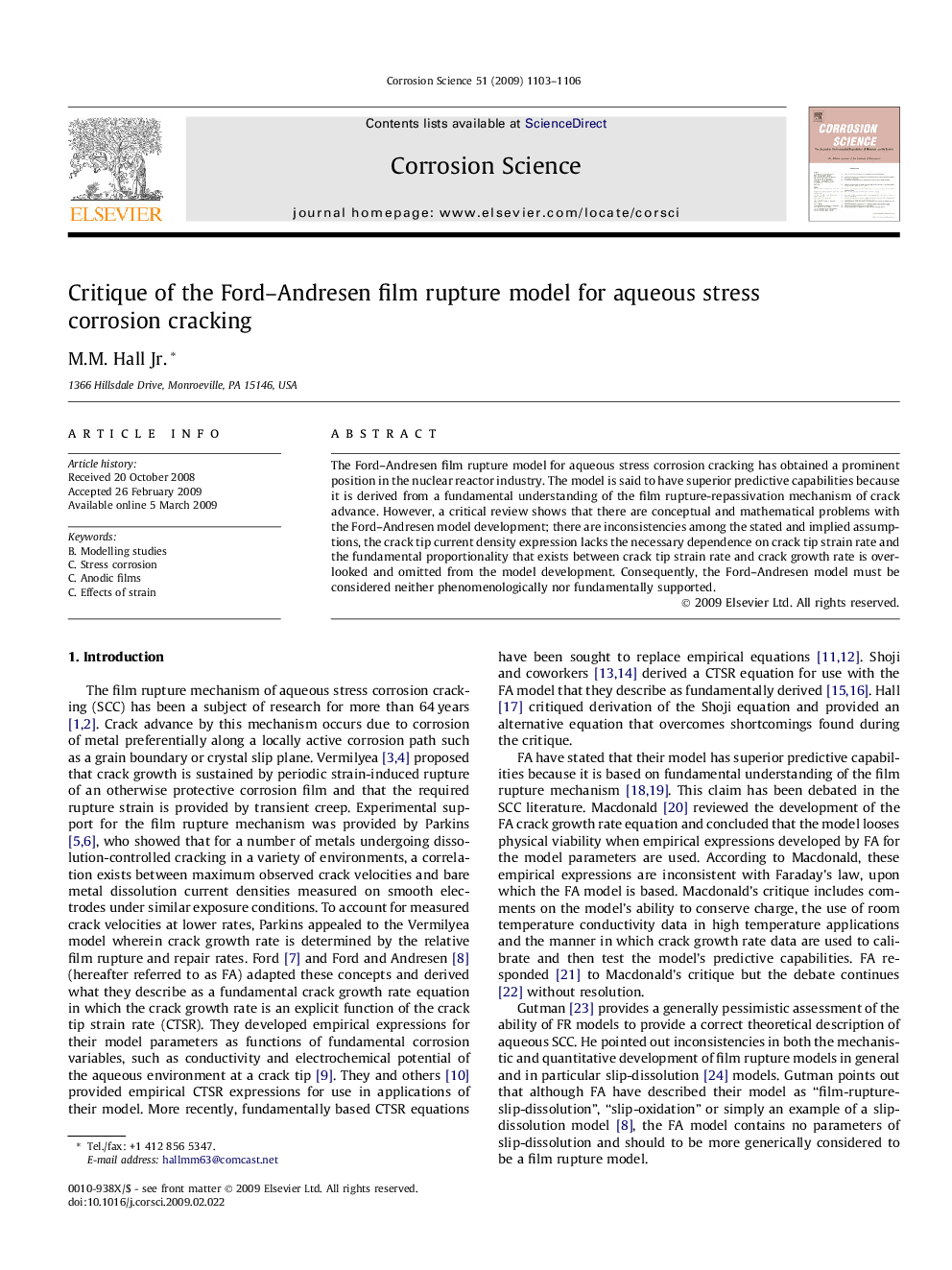| Article ID | Journal | Published Year | Pages | File Type |
|---|---|---|---|---|
| 1470599 | Corrosion Science | 2009 | 4 Pages |
The Ford–Andresen film rupture model for aqueous stress corrosion cracking has obtained a prominent position in the nuclear reactor industry. The model is said to have superior predictive capabilities because it is derived from a fundamental understanding of the film rupture-repassivation mechanism of crack advance. However, a critical review shows that there are conceptual and mathematical problems with the Ford–Andresen model development; there are inconsistencies among the stated and implied assumptions, the crack tip current density expression lacks the necessary dependence on crack tip strain rate and the fundamental proportionality that exists between crack tip strain rate and crack growth rate is overlooked and omitted from the model development. Consequently, the Ford–Andresen model must be considered neither phenomenologically nor fundamentally supported.
